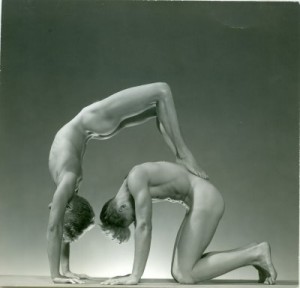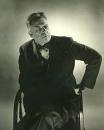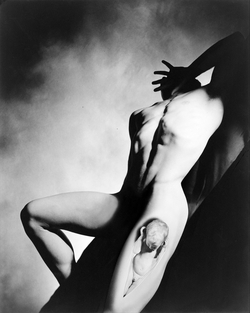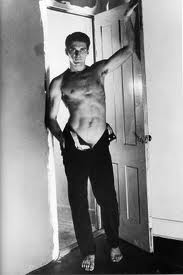|
|
||
|
Pro Tools
FILMFESTIVALS | 24/7 world wide coverageWelcome ! Enjoy the best of both worlds: Film & Festival News, exploring the best of the film festivals community. Launched in 1995, relentlessly connecting films to festivals, documenting and promoting festivals worldwide. Working on an upgrade soon. For collaboration, editorial contributions, or publicity, please send us an email here. User login |
Shirin Neshat: The Absolute Spirit
In the introduction to SHIRIN NESHAT, a handsome and provocative monograph of the Iranian-American photographer and filmmaker published by Rizzoli International Publications, renowned art critic and historian Arthur C. Danto offers a Rosetta Stone translation of Neshat’s unique visual sensibility and artistic impulse. Quoting the 19th century German philosopher Hegel no less, he describes the concept of “absolute spirit”: a meditation on art, philosophy and revealed religion. He contrasts this with the concept of “objective spirit” as described by his contemporary Ludwig Wittgenstein, as a concern for the far more concrete subjects of law, property, goodness, wickedness and the conflict between Right and Wrong.
In Neshat’s career, her photographic and film work has moved across the line between these two monumental spiritual approaches: an embrace of the role of the spirit in the mundane and the political relevance of gender equality and rights of free speech. These contrasting motivations have been borne by her personal life story. She was born in Iran in 1957 during the American-supported reign of the Shah and lived there until she was seventeen. As tensions mounted in her home country, she was sent to America for education. Once the Islamic Revolution took hold in the mid 1970s, her home country was no longer a hospitable place for a young woman who spoke her mind and questioned the tenets of Islam’s strict separation between the sexes.
However, Iran has deeply influenced both her artistic concerns and her visual language. The book’s first chapter chronicles highlights of her first consistent body of work produced in the mid 1990s, the WOMEN OF ALLAH series. In her highly visual portraits of women in traditional dress, four symbolic elements recur: the veil, the gun, the text and the gaze. The minute calligraphic Islamic texts are the most arresting feature, as they cover the faces, hands and bodies of these women whose burkah necessarily hides their features and facial expressions. However, the eyes of these women tell a different story…..one of defiance, rage and forced submission that ultimately prevents them from full participation in the promise of the “new society” brought to bear after the overthrow of the oligarchic Shah.
She emerged on the international stage with her first experiment in video installation, the two-channel projection TURBULENT, co-created with her artistic and life partner Shoja Azari (who is enjoying a retrospective at the Leila Taghinia-Milani Gallery in New York at the moment). In the piece, there are two contrasting screens: one of a male singer facing a full audience chanting a traditional love song with lyrics by the great Iranian mystic Rumi. On the opposite screen, a lone woman performs before an empty auditorium in a more unusual vocalization that eventually transfixes the male singer and his audience. The hard line separation of the sexes and the ban on women participating in musical performance is moving expressed, as is a lyrical transcendence of the role of art in liberating the soul. In published form, the individual images (literally still frames from the video) are powerful moments locked in time that communicate the exuberance and liberation that can be outlawed but never taken away.
The monograph offers what it deems a video trilogy of Neshat’s powerful video works, offering a continuing meditation on their political significance and their spiritual necessity. In the highly stylized RAPTURE, also designed as a dual projection installed facing one another, the viewer is tossed between the competing images of a group of white-shirted men occupying a fortress and a group of black-veiled women outside in a natural landscape. Again, stills from the video piece are powerful indictments of male domination and female subjugation in a society that pretends that it is fully equal.
Neshat employs a more narrative schematic in the third piece in the trilogy, the compelling FERVOR. Against using contrasted screens, the video unravels as an abstracted love story of attraction and sexual connection. A man and a woman are shown isolated, walking along a forbidding landscape. As they move closer together, there is a fleeting moment of recognition and a hint of sexual longing. But both must avoid giving in to their impulses. The conflicts between social impropriety and personal fulfillment, as expressed in a series of close-ups and isolating landscapes, uses traditional filmic language to make both a damning political statement and a spiritual testimony as well.
Neshat made the decision to do her subsequent projects in film, believing that celluloid, as opposed to video, had the necessary sub-text of color, clarity and refinement to express her political treatises in a more lush and exotic manner. In SOLILOQUY, a moving meditation on the themes of identity and exile, PASSAGE, a collaboration with minimalist composer Philip Glass and TOOBA, based on a feminine myth from the Koran that reinforces the necessity of the female spirit, Neshat finds a lushness to her visual images that utilizes both filmic narrative and pure abstraction to make a powerful impression. Again, the film stills utilized in the book (a mix of multiples and single images) bring a provocative intensity and a uncompromising beauty to the imagery. The video trilogy is presented as seperate chapters in the monograph.
The final chapters are devoted to the film series WOMEN WITHOUT MEN, which were originally conceived as stand-alone works, all based on a novel published in Farsi. Exploring the psychologies of the novel’s five main female characters, Neshat presents an engaging and disturbing portrait of what has been lost and what has been gained for her gender as a result of the political experiments of the past century. The short films have been reconceived in a feature film format, also called WOMEN WITHOUT MEN, that contrasts the lives of several Iranian women in the summer of 1953. The film is currently in theatrical distribution via Indiepix.
The challenge of the 270-page SHIRIN NESHAT book is how to translate what are essentially moving images into a tome that must be by its very nature static. Do the film stills stand up as photographs? Yes and no. The individual images are certainly arresting and laden with subtlety and keen emotion and can be appreciated in their own right. But the connecting dots are still missing and the force of the contrasting two-screen images are somewhat lost on the printed page. That said, this is still a powerful and moving group of artistic snapshots that undoubtedly will make readers interested in viewing the original film and video works in their transcendent and spiritually absolute glory.
SHIRIN NESHAT, with a foreward by performance artist Marina Abramovic and text by Arthur C. Danto, is available at retail bookstores, online book outlets and on the Rizzoli USA website: http://www.rizzoliusa.com/catalog/display.pperl?isbn=9780847833139
Sandy Mandelberger, The Printed Page Editor .
26.05.2010 | The Printed Page's blog Cat. : America art critic and historian Arthur C. Danto Artist Arts composer Contact Details editor Entertainment Entertainment http://www.rizzoliusa.com/catalog/display.pperl?isbn=9780847833139 Iran Islam Ludwig Wittgenstein Marina Abramovic Milani Gallery New York Person Attributes Person Career Person Location Philip Glass Photographer retail Rizzoli USA Rumi Sandy Mandelberger Shirin Shirin Neshat Shirin Neshat Shirin Neshat singer Social Issues Social Issues Submission Technology Technology The Printed Page Video installation Visual arts Women in Iran WOMEN WITHOUT MEN PEOPLE
|
LinksThe Bulletin Board > The Bulletin Board Blog Following News Interview with EFM (Berlin) Director
Interview with IFTA Chairman (AFM)
Interview with Cannes Marche du Film Director
Filmfestivals.com dailies live coverage from > Live from India
Useful links for the indies: > Big files transfer
+ SUBSCRIBE to the weekly Newsletter Deals+ Special offers and discounts from filmfestivals.com Selected fun offers
> Bonus Casino
User imagesAbout The Printed PageThe Editor |





























